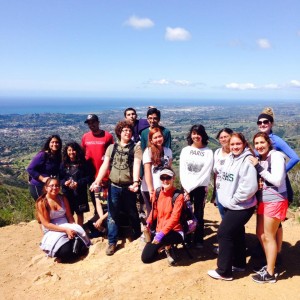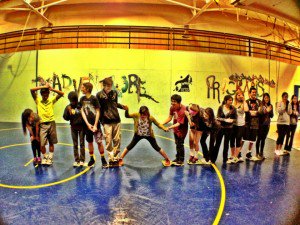Share This
Related Posts
Tags
AHA! Santa Barbara
By Erica Rascón on Oct 15, 2014 in Giving, People
According to the most recent report released by the Center for Disease Control, 22 percent of girls and 18 percent of boys in grades 9-12 reported being bullied at school. The National Association of School Psychologists estimates that is about 3.2 million  children who face verbal and physical abuse at the hands of their peers. Although 71 percent of students report incidents of bullying as a problem at their school, most schools aren’t equipped to handle their concerns.
children who face verbal and physical abuse at the hands of their peers. Although 71 percent of students report incidents of bullying as a problem at their school, most schools aren’t equipped to handle their concerns.
Academy of Healing Arts (AHA! ) Santa Barbara hopes to change all of that, not just in local school districts but throughout the US. The organization strives to achieve its goal by beginning with those who bully and are bullied the most: school children.
67 percent of students believe that schools respond poorly to bullying and that adult help is often ineffective. By working directly with students, AHA! empowers youth to discourage bullying amongst themselves and become advocates of empathy and change.
Molly Green, Development Director at AHA!, knows that strengthening the connection between children plays a key role in the solution to bullying. “If you’re connected to the person next to you, you’re less likely to harm them. Our program is always encouraging self-expression, empathy for the person next to you, and an understanding of commonality.”
To forge these connections, AHA! staff creates counsel circles that bring together the bully, the person that was bullied, and anyone affected by the incident. Through a series of activities and conversations, students learn to share their circumstances, take responsibility for their actions, and learn how their actions impact other members of their community.
AHA!’s principles are based on restorative approaches. Rather than punitive measures, like chastisement and expulsion, restorative approaches bring people together to connect, understand, and take responsibility.
Traditionally in the US, restorative approaches are initiated by adults. AHA! implements the method from the bottom up, beginning with students. Green says, “We feel that unless students take ownership of this as well it won’t be as effective.”
In addition to counsel circles, students learn restorative approaches and other life skills in AHA!’s afterschool programs. Yardi sponsors the after school program’s 14 clubs that allow students to explore personal responsibility, social responsibility, interpersonal skills, spiritual development, setting and reaching goals.
“Our after school program is predominately for kids who are considered at-risk. For most of them, that time of day between school and when parents come home from work is the  riskiest time, so we provide a program is free of change,” explains Green.
riskiest time, so we provide a program is free of change,” explains Green.
AHA! has also teaches restorative approaches through the new Peace Builders program. During a two day workshop, 60 students—described as “natural leaders who reflect the demographic of Santa Barbara High School”—are trained on how to intervene with bullying, standing up to bullies, becoming an ally, and using language as a conduit of peace.
Peace Builders meets once or twice a month, depending on the student. During these meetings, students are given the opportunity to discuss troubles that they encounter as Peace Builders and their successes. Staff learn what kind of support students need to fill their roles more successfully.
“It’s been an extraordinary program. These kids are so impressive and excited about creating a safer school culture. It’s been such a success that Santa Barbara School Superintendent David Cash is trying to raise money for us to do it in all of the local high schools,” says Green.
But Green and her peers aren’t content to stop with their district. Their success resulted in the National Training Institute where teachers and administrators from throughout the nation come to learn restorative approaches. “Our goal is to train teachers, staff, and students so that they can do this themselves. There is no need for us to be there,” says Green. When students, teachers, and staff work together, we draw closer to ending bullying in our schools.
